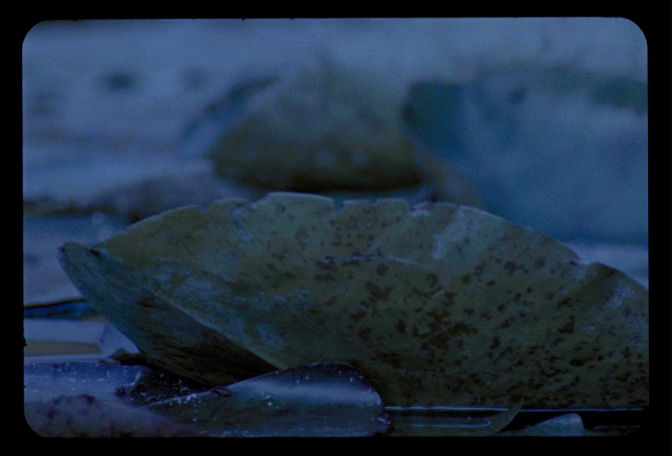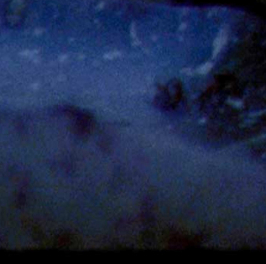Marine Hugonnier. Field Reports
10.24.2023 - 02.11.2024
The Film & Video exhibitions program at the Guggenheim Museum Bilbao is permanently committed to contemporary artistic practices associated with the moving image.
Through her film-based works, Marine Hugonnier (b. 1969, Paris) explores the way in which the conventions of representation collude with ideologies, desires, and discourses. Her practice is an inquiry into the politics of vision, and seeks to uncover the underlying mechanisms of power as it is exerted in the modern capitalist era, where economic acceleration and image reproduction have evolved in synch while preserving colonialist and patriarchal biases at their core.
Originally trained as an anthropologist, Hugonnier uses documentary and fiction strategies that intermingle with one another. Central to the exhibition is Meadow Report (2021), a depiction of the famed Giverny Gardens where the French impressionist Claude Monet created an artificial environment and painted his celebrated Water Lilies in the last decades of his life, while progressively losing his sight to cataracts. She installed her camera in the middle of the lake at dusk, searching an other-than-human vantage point, to observe the garden, the edges of water-lily leaves, and Monet’s iconic green bridge. At a decisive point, the lens of the camera is intentionally removed to place the analogue film directly in contact with the environment. The resulting abstract image captures the shimmering light and movements of all beings during this quiet summer night. The title of the work invites us to consider this operation under the light of the current environmental crisis, drawing a reference to one of the earliest reports on climate change known as the „Meadows Report“ (1972), which predicted the disastrous outcomes of our continuous and unrestrained exploitation of the Earth’s resources.
In the anteroom, the large-scale photograph Towards Tomorrow (2001) shows an image taken in Alaska, on the US side of the Bering Strait, as the artist gazed across the International Date Line into Siberia, Russia. Despite the forty-mile distance between these two coasts, Siberia’s time zone is set 24 hours ahead of Alaska. While every photograph indexes an image of the past, this one also encapsulates a view of the future. Opposite to it, Desire Is Not Much, but Nonetheless… (2015) presents a study of an ancient Roman sculpture, the Sleeping Hermaphroditus, now housed at the Louvre Museum in Paris. In Greek mythology, Hermaphroditus is the child of the gods Aphrodite and Hermes. Their body is revealed by the camera as it circumnavigates the curves of the marble figure, whose feet and lips have been digitally animated. Short color sequences interrupt the otherwise continuous black-and-white film loop. Undermining once again the alleged „naturalism“ of the film record, Hugonnier’s piece attempts to envisage what could constitute desire in a body that transcends conventional binaries, and invites viewers to critically consider the possibility of a non-gendered gaze.
Marine Hugonnier was born in Paris and she is currently based in London. Her work has been has been exhibited internationally, including solo presentations at Jeu de Paume in Paris, Villa Romana in Florence, Kunstverein Brauschweig, Die Tankstelle Berlin, Konsthall Malmö, and at the 52nd Venice Biennale of Art. Hugonnier also holds a PhD and is Professor for Moving Image and Fictional Form at the Karlsruhe University of Arts and Design, Germany.
Gallery: 103
Curator: Manuel Cirauqui
Marine Hugonnier
Meadow Report, 2021
Film 35mm, color, sonido
Courtesy the artist
© Marine Hugonnier



